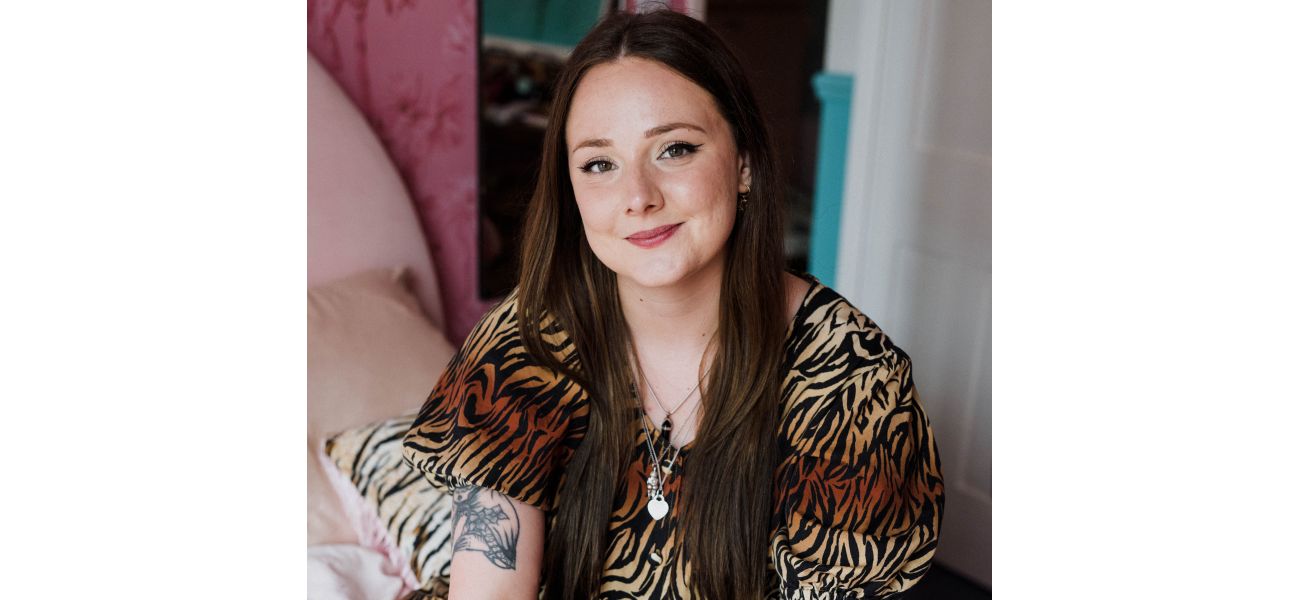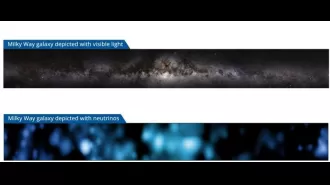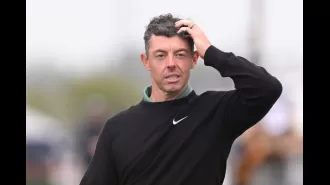Similar to Big Brother's Ali, I also have ADHD and it took me 25 years to receive a diagnosis.
Living in a never-ending contradiction.
October 9th 2024.

Meet Josephine Knechtli, a 27-year-old who was diagnosed with AuDHD at the age of 25. She recalls feeling like she didn't quite fit in with people who only had ADHD or autism. It wasn't until she found others who also lived with both conditions that she finally felt understood and supported.
Harry Rutter, a 25-year-old from Cambridgeshire, is one of the many people who have recently been diagnosed with 'AuDHD', also known as co-occurring autism and ADHD. These are both neurological conditions, and before 2010, you could only be diagnosed with one or the other. However, with the change in medical guidelines, individuals can now receive a dual diagnosis.
Autism Spectrum Disorder affects the way people communicate, behave, and interact with the world, while Attention Deficit Hyperactivity Disorder impacts a person's ability to focus and regulate behaviors like inattentiveness, impulsivity, hyperactivity, and executive function. Despite it being 14 years since the change in guidelines, the term 'AuDHD' has only recently gained popularity, especially in neurodivergent online spaces.
On Instagram, the #AuDHD tag has been used 152,000 times, while on TikTok, the #AuDHD tag has been used almost 350,000 times. Most of this online content revolves around navigating life with AuDHD, and the growing interest in the term has encouraged some individuals to seek a formal diagnosis.
This week, the topic resurfaced after two of the latest housemates on the popular show, Big Brother, had a candid conversation about neurodiversity on the iconic sofas. Forensic psychologist Ali opened up to her housemate Martha about her ADHD diagnosis and her demonstration of autistic traits. She wanted to reassure the other housemates who may have been curious about her social responses.
Ali, who is also a lesbian, is helping to represent not only the LGBTQ+ community but also individuals living with both ADHD and autism. Fans of the show took to social media to express their appreciation for Ali's openness and representation.
Josephine Knechtli, a therapist, was also diagnosed with AuDHD at the age of 25. She credits the diagnosis for providing her with the language to discuss, explore, and create connections that she had been missing for so long. It helped her understand her actions and provided a framework for self-support and asking for support from others.
Similarly, Harry Rutter was also diagnosed with AuDHD in his twenties. As someone who has been diagnosed with both conditions, he describes living with them as a constant paradox. His brain runs at 100mph, yet he needs extra time to process things. He craves spontaneity but is highly resistant to change. He is also chronically disorganized but categorizes everything in his life into lists.
Before the change in the Diagnostic and Statistical Manual of Mental Disorders, individuals could only be diagnosed with either autism or ADHD, not both. This led to many individuals with co-occurring conditions only receiving 50% of the support they needed. Harry, for example, was diagnosed with ASD at the age of 10, but his ADHD traits were often overlooked or attributed to his autism.
Dr. Pablo Jeczmien, a psychotherapist, explains that there is a significant overlap in symptoms between autism and ADHD, which can create confusion for individuals seeking a diagnosis. However, in other ways, the two conditions are contradictory. For instance, an autistic brain tends to need structure and routine, while an ADHD brain craves spontaneity and novelty. Managing these contradictory elements can be challenging for individuals living with AuDHD, as techniques that work for one condition may worsen the other.
Charli Clement, a 23-year-old author and activist, struggled to access the support she needed as a child. She was initially diagnosed with 'mixed anxiety and depression' in Child and Adolescent Mental Health Services (CAMHS). However, this diagnosis did not fully encompass her busy brain and Rejection Sensitivity Dysphoria, which often causes extreme emotional responses. She believes that her ADHD and autistic traits interact significantly, as her need for structure and routine conflicts with her brain's preference for spontaneity.
Abi Owen, a 24-year-old blogger from Wales, doesn't often use the term 'AuDHD' unless she is talking to someone who understands it. She worries that others may assume she has misspoken or discount her autism altogether. However, she believes it is essential to recognize both elements of her condition and how they come together to create a whole different experience.
Living with AuDHD comes with its challenges, but it ultimately boils down to two things: self-forgiveness and patience. Just because someone experiences the world differently than most people, it doesn't make them 'lesser' or deficient. Embracing one's unique way of being is the first step to not just living with AuDHD, but thriving with it.
Research shows that 30-80% of autistic children meet the threshold for ADHD, and 20-50% of ADHD children have co-occurring autism. While these conditions should not be viewed as something to 'cure,' understanding how the brain works can help with day-to-day management. For instance, Charli explains that their hyperactivity is primarily internal, manifesting in impulsive money spending and issues with executive functioning. These traits often clash with their need for structure and routine, creating a constant tug-of-war.
In the end, it's crucial to recognize and understand both autism and ADHD when living with AuDHD. It's not just about managing one or the other; it's about managing the unique combination of both conditions. With self-acceptance and patience, individuals can learn to not just live with AuDHD, but thrive with it.
Harry Rutter, a 25-year-old from Cambridgeshire, is one of the many people who have recently been diagnosed with 'AuDHD', also known as co-occurring autism and ADHD. These are both neurological conditions, and before 2010, you could only be diagnosed with one or the other. However, with the change in medical guidelines, individuals can now receive a dual diagnosis.
Autism Spectrum Disorder affects the way people communicate, behave, and interact with the world, while Attention Deficit Hyperactivity Disorder impacts a person's ability to focus and regulate behaviors like inattentiveness, impulsivity, hyperactivity, and executive function. Despite it being 14 years since the change in guidelines, the term 'AuDHD' has only recently gained popularity, especially in neurodivergent online spaces.
On Instagram, the #AuDHD tag has been used 152,000 times, while on TikTok, the #AuDHD tag has been used almost 350,000 times. Most of this online content revolves around navigating life with AuDHD, and the growing interest in the term has encouraged some individuals to seek a formal diagnosis.
This week, the topic resurfaced after two of the latest housemates on the popular show, Big Brother, had a candid conversation about neurodiversity on the iconic sofas. Forensic psychologist Ali opened up to her housemate Martha about her ADHD diagnosis and her demonstration of autistic traits. She wanted to reassure the other housemates who may have been curious about her social responses.
Ali, who is also a lesbian, is helping to represent not only the LGBTQ+ community but also individuals living with both ADHD and autism. Fans of the show took to social media to express their appreciation for Ali's openness and representation.
Josephine Knechtli, a therapist, was also diagnosed with AuDHD at the age of 25. She credits the diagnosis for providing her with the language to discuss, explore, and create connections that she had been missing for so long. It helped her understand her actions and provided a framework for self-support and asking for support from others.
Similarly, Harry Rutter was also diagnosed with AuDHD in his twenties. As someone who has been diagnosed with both conditions, he describes living with them as a constant paradox. His brain runs at 100mph, yet he needs extra time to process things. He craves spontaneity but is highly resistant to change. He is also chronically disorganized but categorizes everything in his life into lists.
Before the change in the Diagnostic and Statistical Manual of Mental Disorders, individuals could only be diagnosed with either autism or ADHD, not both. This led to many individuals with co-occurring conditions only receiving 50% of the support they needed. Harry, for example, was diagnosed with ASD at the age of 10, but his ADHD traits were often overlooked or attributed to his autism.
Dr. Pablo Jeczmien, a psychotherapist, explains that there is a significant overlap in symptoms between autism and ADHD, which can create confusion for individuals seeking a diagnosis. However, in other ways, the two conditions are contradictory. For instance, an autistic brain tends to need structure and routine, while an ADHD brain craves spontaneity and novelty. Managing these contradictory elements can be challenging for individuals living with AuDHD, as techniques that work for one condition may worsen the other.
Charli Clement, a 23-year-old author and activist, struggled to access the support she needed as a child. She was initially diagnosed with 'mixed anxiety and depression' in Child and Adolescent Mental Health Services (CAMHS). However, this diagnosis did not fully encompass her busy brain and Rejection Sensitivity Dysphoria, which often causes extreme emotional responses. She believes that her ADHD and autistic traits interact significantly, as her need for structure and routine conflicts with her brain's preference for spontaneity.
Abi Owen, a 24-year-old blogger from Wales, doesn't often use the term 'AuDHD' unless she is talking to someone who understands it. She worries that others may assume she has misspoken or discount her autism altogether. However, she believes it is essential to recognize both elements of her condition and how they come together to create a whole different experience.
Living with AuDHD comes with its challenges, but it ultimately boils down to two things: self-forgiveness and patience. Just because someone experiences the world differently than most people, it doesn't make them 'lesser' or deficient. Embracing one's unique way of being is the first step to not just living with AuDHD, but thriving with it.
Research shows that 30-80% of autistic children meet the threshold for ADHD, and 20-50% of ADHD children have co-occurring autism. While these conditions should not be viewed as something to 'cure,' understanding how the brain works can help with day-to-day management. For instance, Charli explains that their hyperactivity is primarily internal, manifesting in impulsive money spending and issues with executive functioning. These traits often clash with their need for structure and routine, creating a constant tug-of-war.
In the end, it's crucial to recognize and understand both autism and ADHD when living with AuDHD. It's not just about managing one or the other; it's about managing the unique combination of both conditions. With self-acceptance and patience, individuals can learn to not just live with AuDHD, but thrive with it.
[This article has been trending online recently and has been generated with AI. Your feed is customized.]
[Generative AI is experimental.]
0
0
Submit Comment





